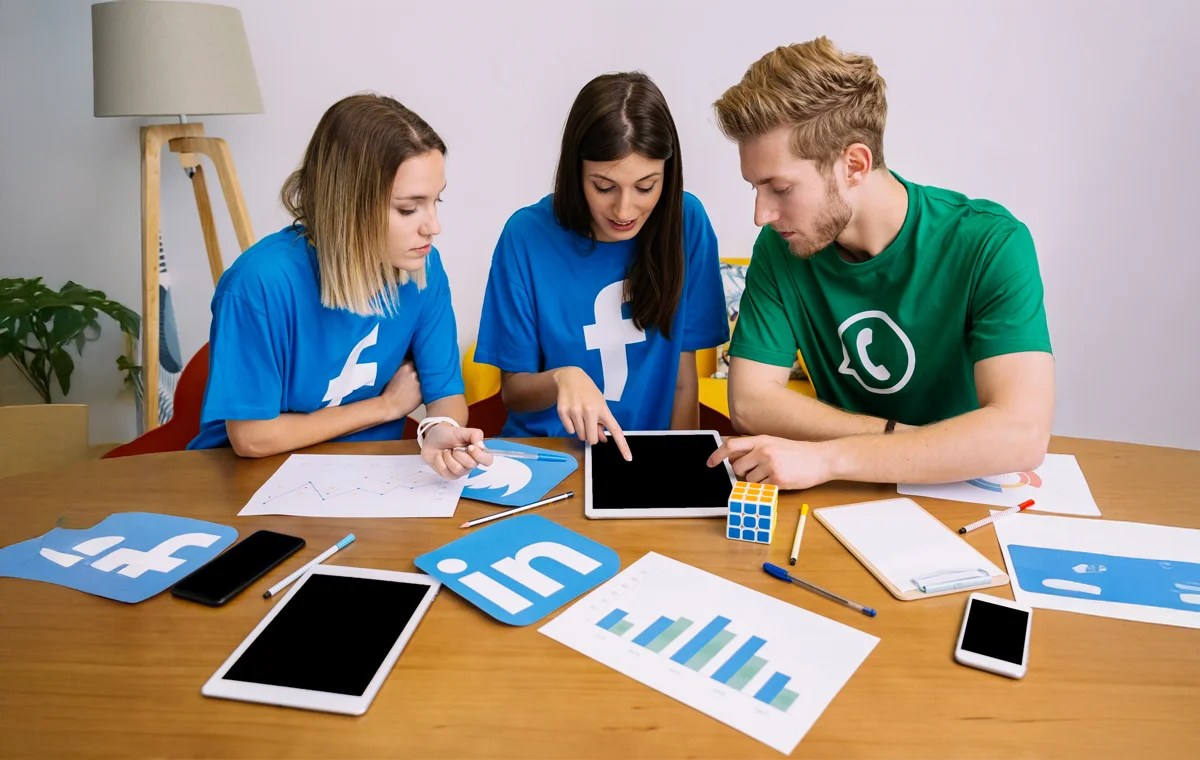Advertising agencies often drive social media for their clients through niche campaigns, data-driven strategies, and expertise that impact brand visibility.
Yet, they treat their own social presence like an afterthought. It becomes a last-minute task: a random case study here, a team lunch photo there. It can feel like posting just to stay visible, not to generate real results.
A social strategy for an ad agency is just as crucial as for clients. Even the best content will fail to generate leads without intent or direction.
Let’s break down how to build an advertising agency social media strategy to drive inbound leads, build authority, and support your sales goals.
A social media strategy for your ad agency is the blueprint to identifying, engaging with, and converting long-term, quality clients who will be interested in your services.
Over 90% of American marketers in companies with over 100 employees use social media for marketing purposes. To be discoverable by such clients, having a solid social media strategy for agencies is imperative.
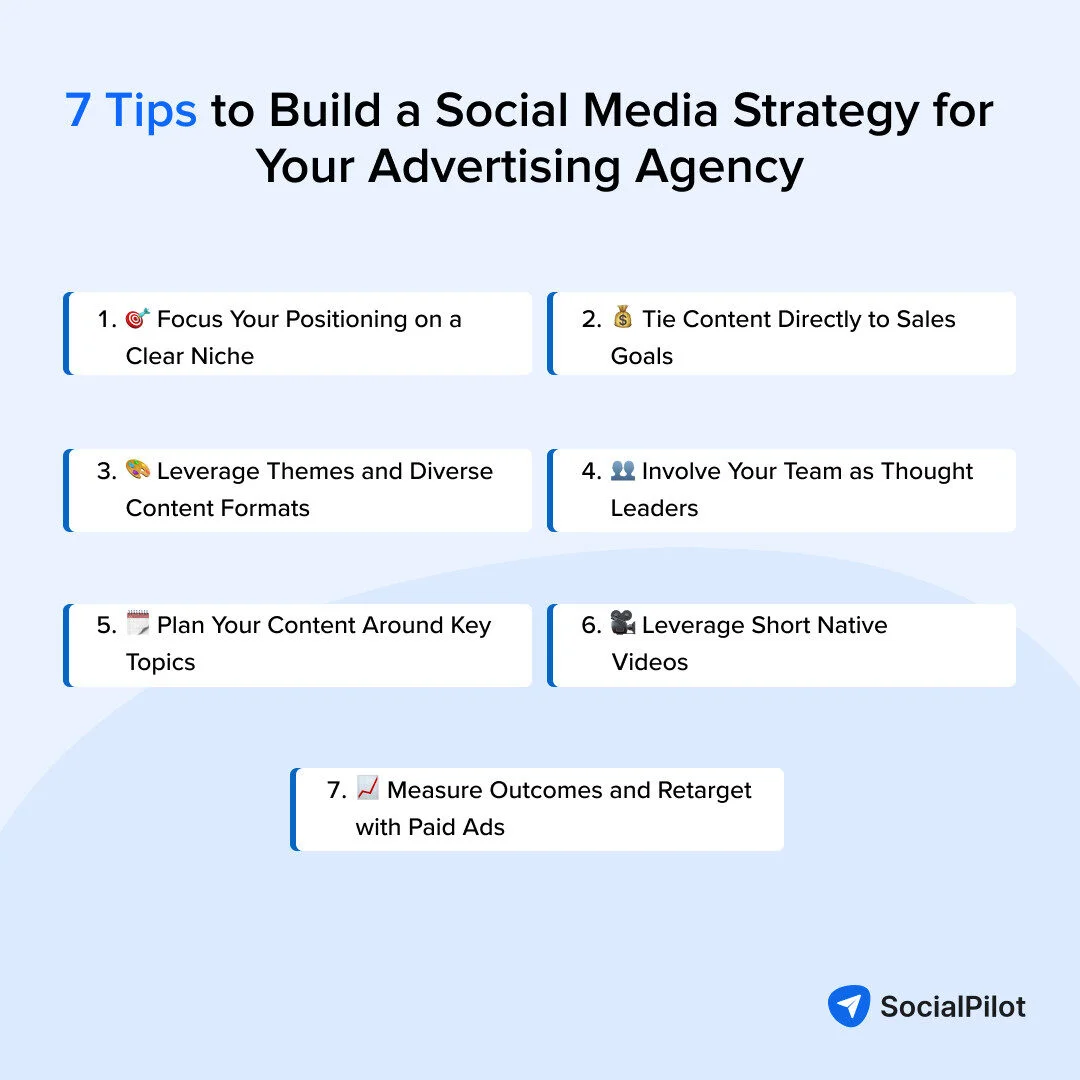
It can help you build trust and stay top-of-mind in a crowded market. Here are seven practical strategies to help you get there:
1. Focus Your Positioning on a Clear Niche
At the top of your social media marketing checklist should be the goal or outcome you want. Do you want to generate leads, grow brand awareness, attract talent, or support client retention?
Your content and channels should reflect that purpose. It’s tempting to market your agency as “full-service,” but vague positioning often leads to low-quality leads. Being clear about who you help and how you help them has a higher chance of success.
Agencies that focus on a specific industry, service, or audience segment tend to generate better engagement and higher-quality leads.
How To Implement:
- Define Your Niche: Review your top-performing case studies and client satisfaction scores. Identify the verticals
- Update Your Bios and Messaging: Make your niche visible across your profiles. Rewrite your bios to reflect who you serve and what problems you solve
- Create Niche-Specific Content: Publish content tailored to that audience, such as industry trends, pain point breakdowns, or service insights
An exemplary case of an agency effectively focusing its positioning on a clear niche is @LYFEMarketing, a social media management company that specializes in helping small businesses grow through targeted social media strategies.
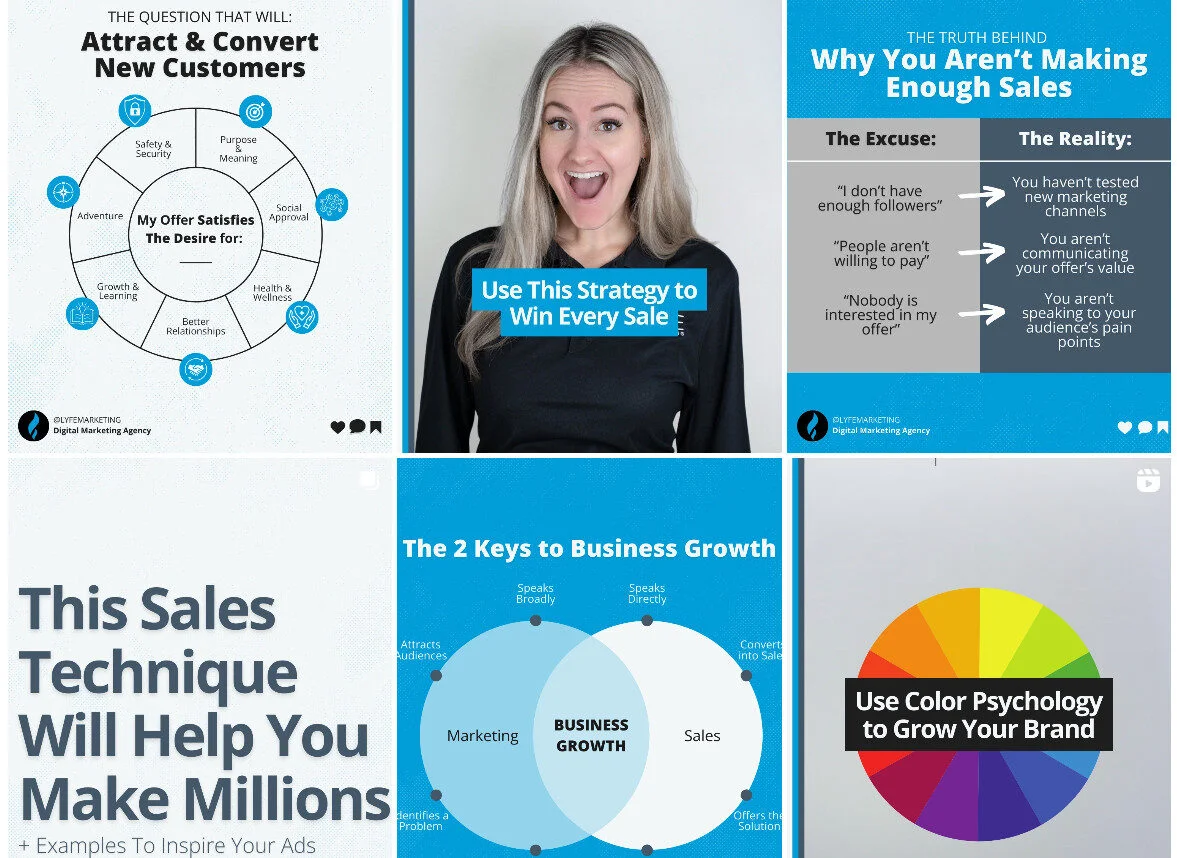
By concentrating exclusively on the needs and challenges of small enterprises, LYFE Marketing has distinguished itself in the crowded digital marketing landscape.
Their Instagram profile reflects this in its client success stories, tailored marketing tips for small businesses, and insights into specialized services. This strategic positioning has resulted in significant engagement and fostered strong brand loyalty among their target audience.
2. Tie Content Directly to Sales Goals
Your content shouldn’t just be about getting likes. It should support your business goals, whether that’s booking calls, getting downloads, or building your email list.
According to Social Media Examiner, 58% of marketers say social media has improved their lead generation performance over the last 12 months. When your strategy is tied to sales goals such as lead generation, sales calls, and inbound inquiries, you’ll have clearer content priorities.
How To Implement It:
- Define Your Target Audience: Be clear about who you’re speaking to—industries, job titles, pain points, and what they value. The more specific your audience, the better your marketing strategy and engagement will be.
- Involve Your Sales Team: Understand the most common objections or questions from prospects. Build content that addresses those early in the journey.
- Create Content Funnels: Experiment with organic vs paid advertising posts to drive traffic to lead magnets, landing pages, or scheduling links.
- Choose the Right Channels: Focus on the right social media channels for your business. For most B2B agencies, LinkedIn and YouTube are most effective. For creative or DTC-focused teams, Instagram or TikTok may be more relevant.
Warby Parker’s content does this well. Their Home Try-On programme is a standout example, promoted through social media and email marketing that drives users to take direct action. They pair that with educational posts and UGC using the #WarbyHomeTryOn tag, which brings social proof into the funnel. This blend of content and conversion-focused strategy helped increase purchase likelihood by 50%, showing how intent-led content can support real results.
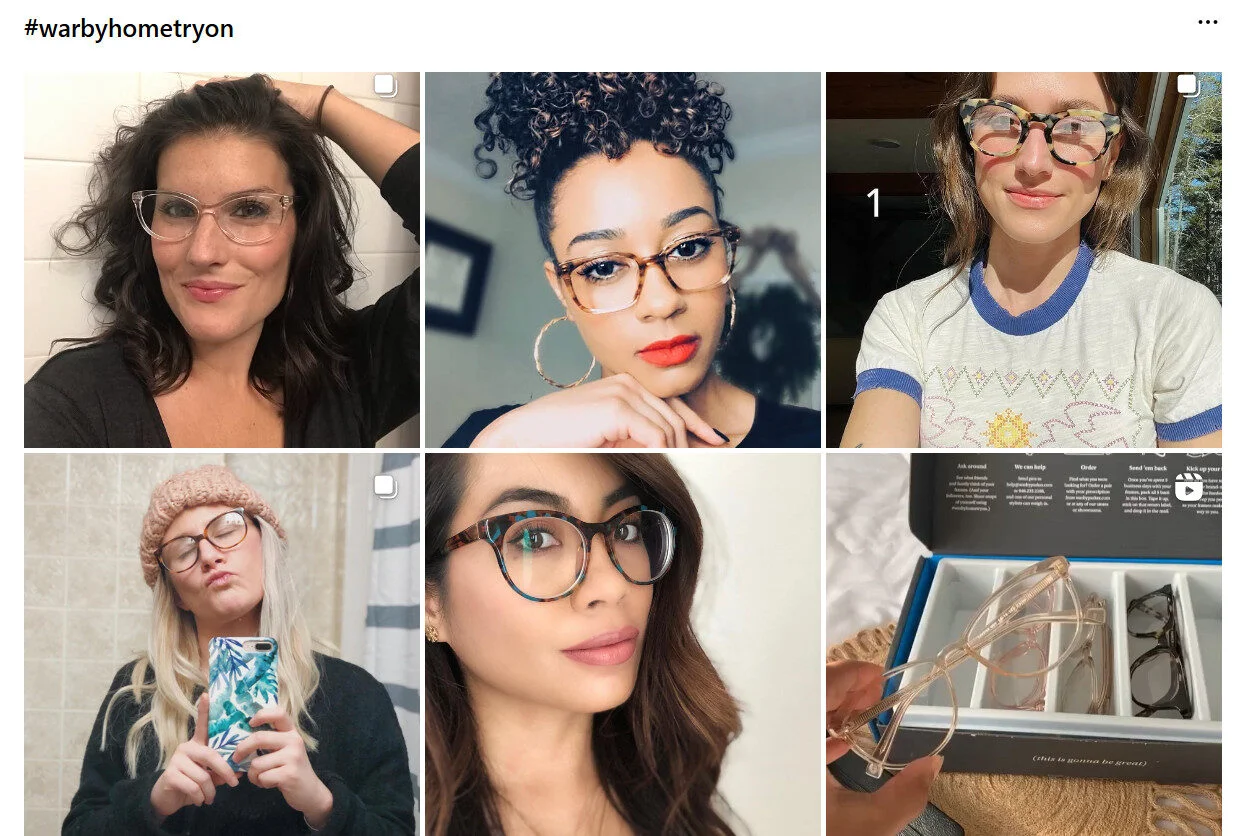
3. Leverage Themes and Diverse Forms
Social proof builds trust. When you share the thinking and results behind your projects, it allows potential clients to see how you solve real problems.
To do this effectively, choose three to five content pillars that reflect your expertise. These could include client case studies, ad campaign breakdowns, thought leadership, behind-the-scenes content, or industry commentary.
For instance, according to a Gartner survey, 54% of B2B marketers report that case studies have a significant impact on the success of brand campaigns. This underscores how well-crafted case studies in your content strategy can yield effective results.
How To Implement It:
- Research Themes: Analyze industry trends, peer content, and popular topics to choose broad content themes to focus on. These will form the basis of your social media content calendar.
- Create a Content Series: Choose 4–6 successful campaigns and turn each one into a 3-part series: problem, approach, results.
- Use Carousels or Short Videos: These formats hold attention longer and are more suited for breaking down results
- Avoid Jargon: Keep the explanations clear. Focus on outcomes and what was learned.
In 2014, AKQA developed the Nike Training Club app, a personal trainer application that provided guided workouts and allowed users to sync their own music. They marketed their innovative approach through snappy posts, videos, and influencer collaborations.
This led to the app becoming the top free health and fitness app in the iTunes store within a month of its launch, with over 2.8 million downloads.
Following their success, they documented and shared the problem they addressed, their strategic approach, and the impressive results achieved on multiple platforms, thereby reaching a larger audience and building trust with potential clients.

4. Involve Your Team as Thought Leaders
Modern social media is increasingly personality-driven. When team members speak on behalf of the agency, it brings more depth, relatability, and credibility to your brand.
According to Edelman’s 2024 Trust at Work report, trust in leadership can rise from 25% to 84% when employees feel trusted by executive management, reinforcing the value of authentic voices within the company.
How To Implement It:
- Create A Contributor Plan: Choose 2–3 internal voices (strategists, designers, founders) to post regularly on LinkedIn or Twitter
- Assign Formats: Give each person a format. For eg, “Creative Thinking Tuesdays” or “Client Lessons Friday”
- Make It Part Of KPIs: Include personal brand content in your marketing team’s performance goals
It’s a tactic that agencies like Ogilvy are already using well. Recently, Reid Litman from Ogilvy Consulting shared insights from a Gen Z and youth culture report directly on Instagram.
The post not only sparked conversation but positioned Ogilvy’s internal expert as a go-to voice on the topic, reinforcing the brand’s authority through its people.
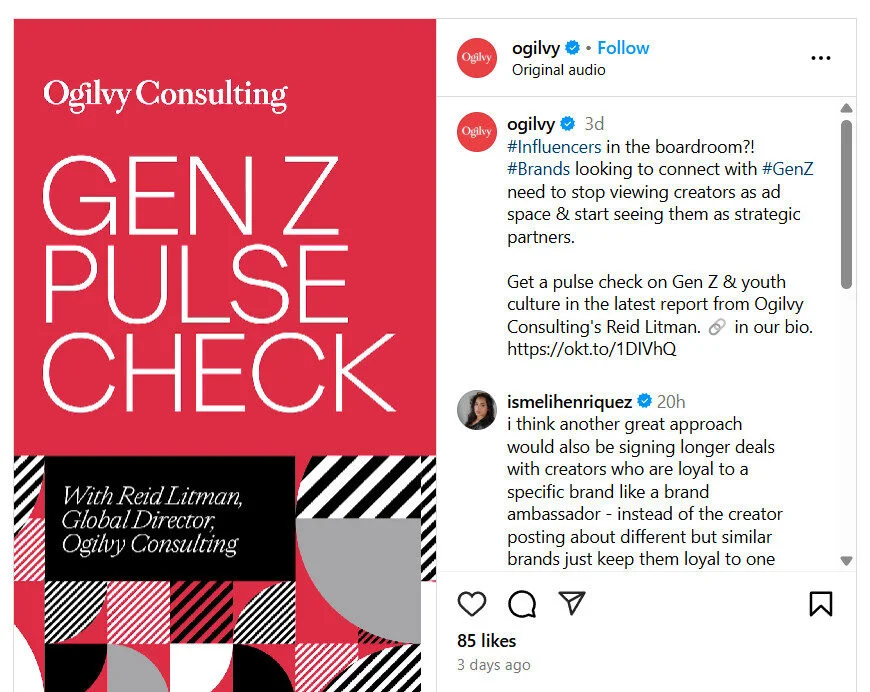
5. Plan Your Content Around Key Topics
A study published in the Journal of Strategic Marketing highlights that having a clear and structured content strategy is essential for producing effective social media content that connects with the target audience and drives engagement.
One way to achieve this structure is by using 4–5 key content pillars. These pillars help organize your messaging, maintain consistency, and bring clarity to your overall social feed.
How To Implement It:
- Pick Themes: These could include case studies, team culture, trends, tips, and FAQs
- Rotate Weekly: Ensure each pillar shows up at least once a week, creating a healthy mix across the month
- Tag and Analyze: Tag each post by pillar to track performance and adjust if one consistently underperforms
Brainstorming for the right ideas, juggling multiple themes across channels, converting them into effective posts, and publishing consistently can be overwhelming.
With SocialPilot’s Scheduling and AI capabilities, you can plan, create, and schedule your agency’s and clients’ social media posts effortlessly from a single dashboard. For optimal results, you can plan ahead with a monthly calendar and make room for timely or reactive content. Empower your marketing team to work smarter, stay consistent, and never miss a moment.
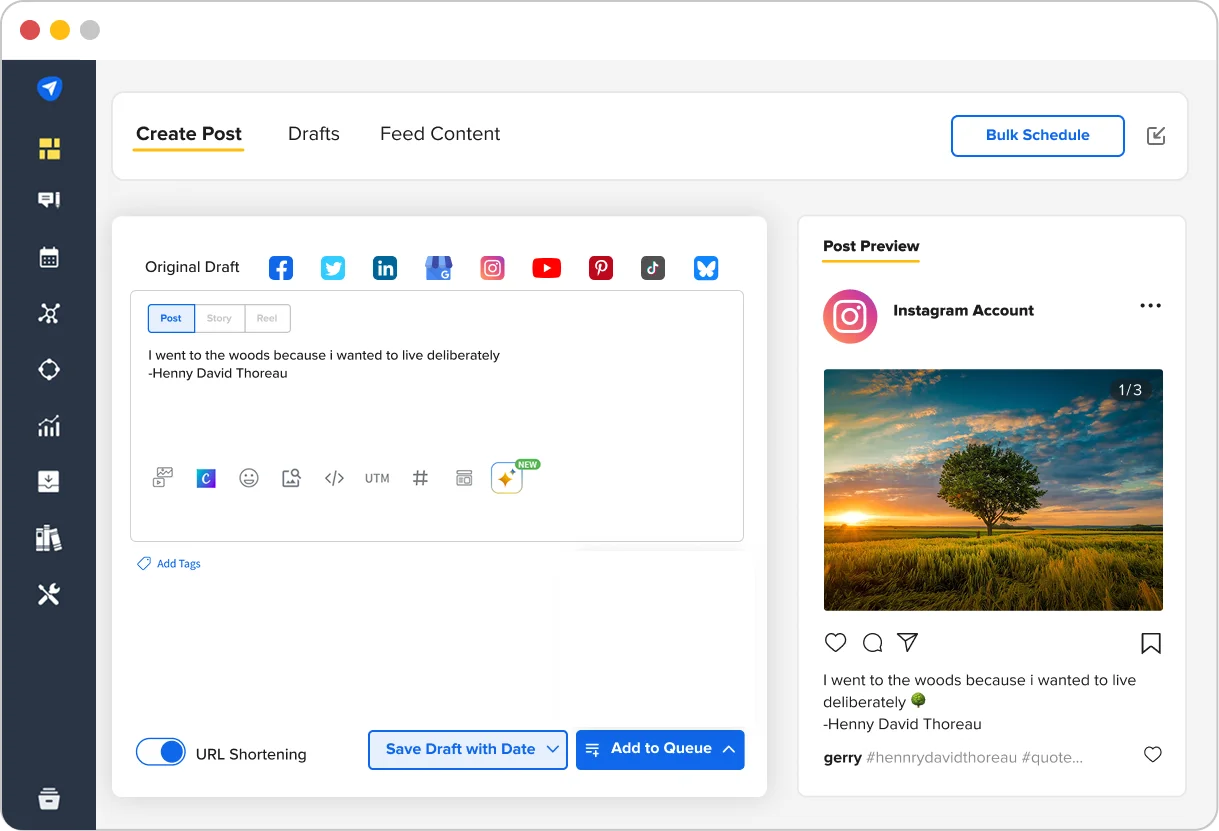
6. Leverage Short Native Video
Video helps people connect with your brand faster. 78% of people prefer to learn about a new product or service via short video content. When done well, even short clips can build trust, show expertise, and spark interest. Native video (posted directly on the platform) tends to get better reach and engagement than external links.
How To Implement It:
- Start Simple: Use phone cameras to record tips, campaign breakdowns, or opinion takes
- Keep It Short: 60–90 seconds works best on LinkedIn and Instagram
- Use Subtitles: Most people scroll without sound — tools like Submagic or CapCut help here
Consider the approach of @VisualCountry, a creative agency specializing in short-form video content. They make good use of native videos to show their projects and share insights from the industry.
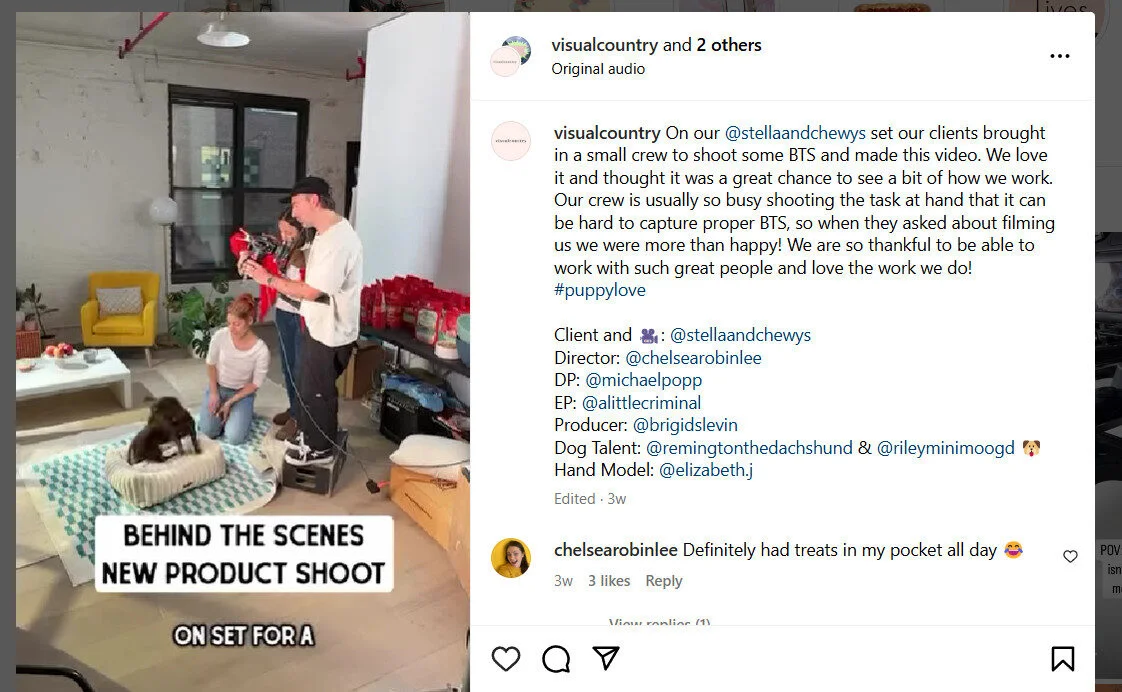
7. Measure Outcomes and Retarget with Paid Ads
Track performance by goal, whether that’s boosting social media engagement, reach, clicks, or conversions. Refine your content and strategy based on the social media ROI that you track.
For instance, many visitors may come to your website, look around, and leave without taking action. Retargeting with specific paid ads for users who show interest can help you capture an audience that wants your services. It’s also cost-effective since you’re only showing ads to warm leads.
How To Implement It:
- Install Tracking Pixels: Facebook, LinkedIn, and Twitter all allow this
- Build Retargeting Audiences: Website visitors, video viewers, or post engagers
- Keep Ads Soft: Retargeting should remind, not hard sell. Use testimonials, offers, or soft CTAs like “Let’s talk.”
It’s a simple tactic, but when done well, it works. Take Disruptive Advertising, for instance. This award-winning agency uses retargeting ads on platforms like Facebook and Instagram. They create retargeting audiences based on website visitors and engage them with soft ads, such as case studies or testimonials, featuring non-intrusive CTAs like “Learn More” or “Get in Touch” to nurture leads.
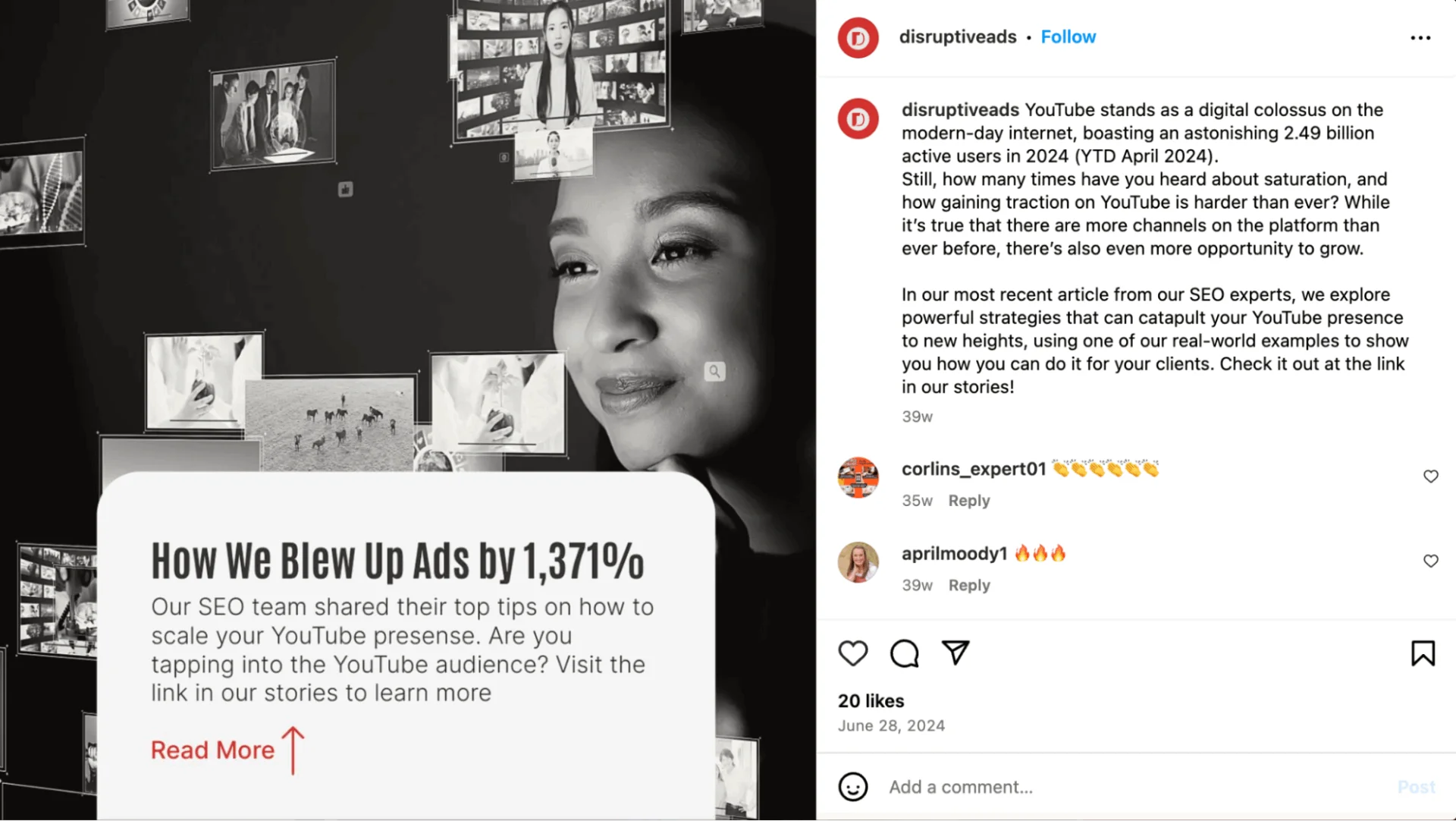
Not all platforms should be part of your advertising agency’s social media strategy. Spreading your content across too many channels can dilute your messaging. Focusing on just one or two social media platforms where their target audience is most active is a better strategy to follow. The right platform will depend on your niche, your services, and how your audience consumes content.
1. LinkedIn — Ideal for B2B and High-Intent Leads
If your agency serves B2B clients for social media, SaaS brands, consultants, or any professional services, a LinkedIn strategy should be your top priority. It’s where decision-makers are active and looking for insights, not just entertainment. It also allows for direct outreach and organic visibility without needing a large ad budget.
Why It Works:
- Posts from personal profiles (like founders or strategists) tend to get strong reach.
- Great for publishing thought leadership, client wins, and short-form videos.
- High-quality leads, especially for agencies selling retainers or strategy work.
2. Instagram — Strong for Creative Agencies and Brand Building
Instagram works well for agencies that focus on branding, design, content, or paid media. As a visual-first platform, it’s built for sharing creative, behind-the-scenes, and client work. With features like Reels, Stories, and carousel posts, it offers several ways to showcase your work and tell stories.
Why It Works:
- Perfect for building trust and showing personality.
- Clients often check your feed before reaching out.
- Good platform for short campaigns or lead magnets using link-in-bio tools.
3. YouTube Shorts — Great for Expertise and Discovery
Short-form video is growing fast, and YouTube Shorts is one of the best channels for long-term discoverability. If your team is comfortable on video, you can repurpose Reels or LinkedIn clips here, too. It’s useful for building authority, even with a small audience.
Why It Works:
- Good for teaching — tips, breakdowns, or quick takes on trends
- Content lives longer than on most social platforms
- Strong reach potential without needing followers to start
4. TikTok — If You’re Targeting Startups or Creatives
TikTok isn’t just for Gen Z. Many agency founders are using it to build audiences and drive leads. It’s a good fit for fast-growing industries and services aimed at startups. It works best when your brand tone is relaxed and your team is happy to be on camera.
Why It Works:
- Easy to go viral with the right hook and structure
- The algorithm favours creators over brands, so individuals shine
- Fast-growing tool for lead generation in creative industries
5. Twitter/X — Still Relevant for Networking
If your audience is active on X — like media, tech, crypto, or startups — this can be a good place for networking and joining industry conversations. It’s fast-paced, so it requires more frequent posting, but it works well for improving visibility in certain industries.
Why It Works:
- Great for engaging in real-time discussions
- Good reach if you’re consistent and niche-specific
- Ideal for founders and strategists who enjoy short-form writing
When done well, a social media strategy delivers long-term value. It helps attract the right leads and positions your agency as a trusted expert in the industry.
1. Attracts Better-Fit, Inbound Leads:
Clear, consistent, and tailored content draws in prospects who are already aligned with your offer. It filters out the wrong audience and brings forward those more likely to convert. That’s one reason marketers now dedicate around 25% of their budget to content marketing—social media converts!
When your agency shares insights, results, and opinions regularly, it builds trust. In fact, 60% of companies reported that being consistent in branding contributed to 10% to 20% revenue growth. This kind of authority not only helps you close deals faster but also gives you the leverage to charge more and stay top of mind with prospects.
3.Speeds Up the Sales Process:
If prospects see your content before getting in touch, they already know a bit about how you work and what you’re good at. 55% of B2B buyers now rely more on content to research and make purchasing decisions, a clear sign that content plays a bigger role earlier in the funnel.
4. Makes Your Agency Easier to Find Online:
Social media SEO content boosts your visibility not just on social platforms but on search engines as well. Platforms like LinkedIn and Instagram now have posts indexed by Google. This means potential clients can come across your agency even when they’re not actively looking.
5. Supports Better Client Retention:
Social content doesn’t just attract new clients; it also reinforces trust with current ones. It’s no surprise that customer retention is now a top-two priority across all business sizes. Agencies that continue to show value after the initial engagement are more likely to retain accounts and expand them over time.
Don’t Just Scroll — Show Up
A strong advertising agency social media strategy is more than a content calendar. It’s your digital storefront, your pitch, and your proof—running 24/7. But building and managing that strategy at scale? That’s where the right tool makes all the difference.
SocialPilot is designed for agencies like yours to help you plan, publish, collaborate, and measure your content all in one place. SocialPilot gives you powerful features like bulk scheduling, branded reports, white-label access, and AI-powered content tools without the cost bloat of traditional platforms.
